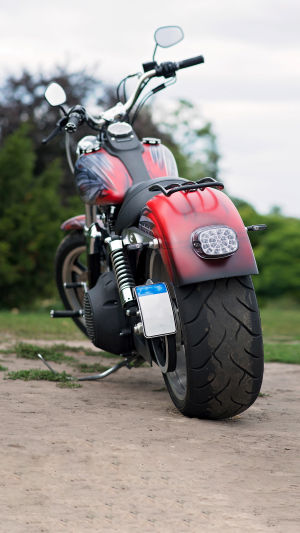Motorcycles are a versatile form of transportation that comes in a variety of different types, each with unique features and uses. Cruisers, sportbikes, dual-purpose motorcycles, roadsters, and electric motorcycles are introduced here and their features and uses are discussed in detail.
1. Cruiser motorcycles: - Features: Cruiser motorcycles usually have wide bodies, low seats, and powerful engines. They are designed with comfort and long-distance driving in mind.
- Purpose: Cruising motorcycles are suitable for long-distance travel and highway cruising. They are often used for casual cruising and enjoying the scenery.
2. Sports motorcycle:
- Features: Sports motorcycles are usually light and agile, with high-performance engines and excellent suspension systems. They are designed for fast driving and intense driving experiences.
- Purpose: Sports motorcycles are suitable for racing, curved road driving, and sports performance. They are often raced on race tracks or ridden in scenic mountainous areas.
3. Dual-purpose motorcycles:
- Features: Dual-purpose motorcycle with off-road and on-road driving capabilities, rugged suspension and tires, and a high seat.
- Purpose: Dual-purpose motorcycles are versatile and can travel on a variety of terrains, including city streets, dirt roads, and rugged mountains.
4. Sports motorcycle:
- Features: Sports motorcycle has a lightweight body, excellent suspension, and high-performance engine. They are designed with speed and handling in mind.
- Purpose: Sports motorcycles are suitable for racing on the track and for riders interested in extreme-speed driving on the highway. They are often the supercars of the motorcycle world.
5. Electric motorcycle:
- Features: The electric motorcycle uses an electric drive system, does not require fuel, and is clean and environmentally friendly. They are usually quiet and have high torque.
- Purpose: Electric motorcycles are suitable for urban commuting and short trips. Their charging facilities are becoming more widely available, providing a viable option for zero-emission transportation.
Each motorcycle type has its own unique charm and applicable scenarios, and riders can choose the most suitable type according to their needs and interests.
In addition, there are hybrid motorcycles such as adventure motorcycles, classic motorcycles, and street bikes that combine features from different types to meet a wider range of riding needs.
Motorcycle technology has seen many significant innovations and developments over the past few years, including smart controls, electric powertrains, safety features, and innovative designs. Below is a discussion of the latest developments in these areas:
1. Intelligent control:
- Intelligent control systems are widely used on motorcycles. These systems include advanced stability controls such as traction control, electronic stability control, and cruise control.
- The latest motorcycles are also equipped with advanced human-machine interfaces such as large-screen LCD instrument panels that provide navigation, entertainment, and smartphone integration functions.
- Some motorcycles are also equipped with self-driving technology, allowing riders to relax and drive in heavy traffic.
2. Electric power system:
- The electric motorcycle market is growing rapidly. The latest electric motorcycles use advanced lithium-ion battery technology to provide longer range and shorter charging times.
- Motor technology in electric motorcycles continues to improve, providing higher power and smoother power delivery.
- Some electric motorcycles also have adjustable driving modes, allowing riders to choose different performance modes according to their needs.
3. Security features:
- Motorcycle safety features have been significantly improved. Advanced braking systems, such as anti-lock braking system (ABS) and traction control, provide better braking performance and stability.
- The motorcycle is also equipped with an advanced collision detection system and intelligent brake assist system to reduce the risk of accidents.
- Advanced helmet technology includes head impact sensors and enhanced communication features to help improve rider safety.
4. Innovative design:
-Motorcycle designs are also constantly innovating. Some manufacturers have launched new concept models that use futuristic designs and advanced materials to provide lighter and aerodynamically optimized bodies.
- The market for customized motorcycles is also growing, allowing riders to tailor their motorcycles to their own tastes and needs, including color, seats, body shape, etc.
- Increased environmental awareness is also leading to more sustainable designs, including renewable materials and greater fuel efficiency.
To sum up, motorcycle technology is constantly evolving to meet riders’ growing demands for performance, safety, and convenience.
In the future, we can expect to see more intelligent, electrified, and innovative design applications in the motorcycle field to provide riders with a better riding experience. At the same time, concerns about sustainability and safety will continue to drive the development of motorcycle technology.





